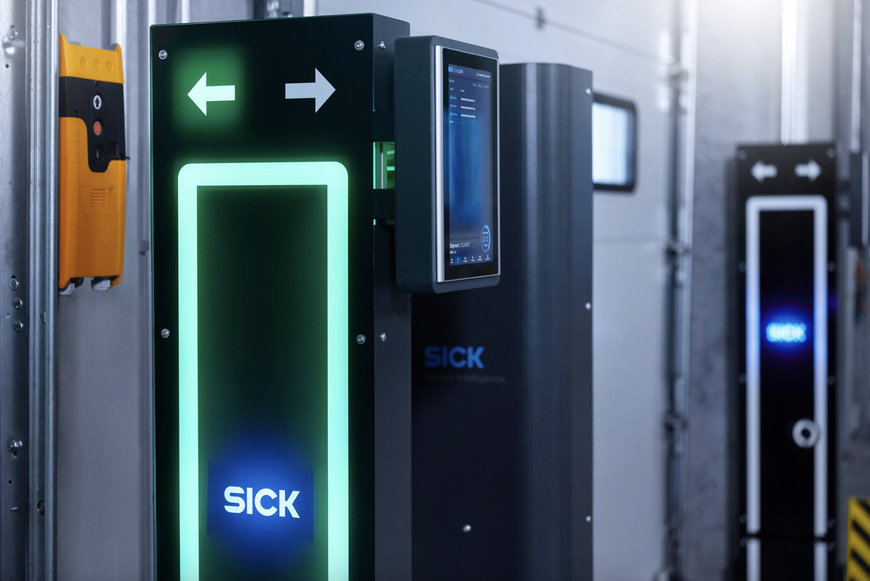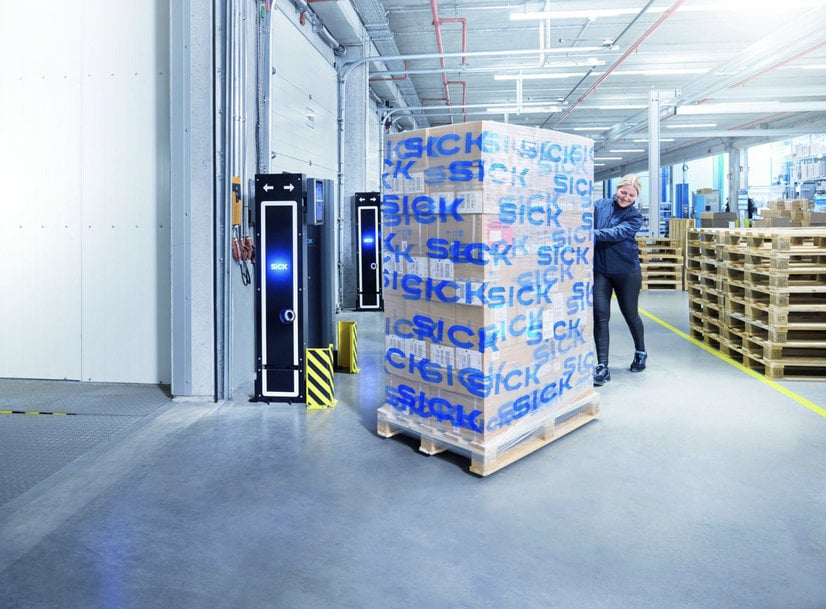www.ptreview.co.uk
16
'24
Written on Modified on
SICK PRESENTS NEW IDENT GATE SYSTEM FOR GREATER TRANSPARENCY
The Ident Gate System (IGS) creates transparent logistics and supply chains and thus the opportunity to further optimize them.

With the introduction of the Act on Corporate Due Diligence Obligations in Supply Chains, the responsibility of companies no longer ends at their factory exit or loading gates. It extends across the entire supply chain. This presents companies with fundamental challenges when it comes to documentation.
SICK has developed a solution to these challenges with its new Ident Gate System (IGS), which not only fulfils the basic requirements, but goes even further. With the aid of a wide range of sensors from SICK for object detection, goods identification and direction recognition, the system helps to create greater transparency for incoming and outgoing goods. Depending on the requirements, the relevant characteristics of the delivery can be recorded and compared. Moreover, modular connection points can be provided for different sensors in the system.
IGS: High-tech identification portal with ERP connection and cloud option
The IGS is used for object and goods identification at loading gates, internal hall entrances and other locations relevant for recording material movements. The size of the portal can be flexibly dimensioned so that forklifts and loads of different heights and widths can pass underneath. This modular approach also makes it possible to combine the use of various technologies. Cameras are used to identify barcodes or 2D codes and, if required, the portal can be supplemented or replaced by a pulse-reading RFID read/write device in UHF technology with an integrated antenna. Reliable direction detection and reader triggering is also possible with the aid of 2D LiDAR sensors. 3D snapshot cameras can be added if additional volume detection or load protrusion detection (load carrier classification and counting) is required. Meanwhile, a simple traffic light display clearly shows the operational status. There is also the option of using a touch display for the visualization of detailed information about the consignment and to simultaneously enable processing.
In addition, the IGS middleware provides an overview of the material flow via a graphical user interface (GUI). Thanks to seamless integration, the system can transfer the recorded data to the higher-level Enterprise Resource Planning (ERP)/Warehouse Management System (WMS) or cloud system or synchronize it independently. The modular design of the IGS also allows a wide range of customized hardware and software adaptations for specific customers and applications.

Contactless and interference-free object and goods identification in real time
In Germany, the Act on Corporate Due Diligence Obligations in Supply Chains affects a large number of local and global companies. Currently, the "retail and discount" market segment as well as automotive companies and TIER suppliers are particularly affected by legally compliant transparency in material flows. This is where the IGS is primarily used. During operation, the IGS portal is started either manually via a delivery order, by software or by the sensor system. The basic data on incoming goods or goods to be dispatched is provided by the customer's IT system in the IGS software. This includes labelled objects, goods, pallets, small and special load carriers or other transport aids. They are all identified by barcode, 2D code or RFID, recorded in their direction of movement if required, compared with the shipping notification or the loading list, synchronized and displayed via GUI.
This ensures that only objects that are transported through the IGS are recorded. This does not apply to goods or loads that are parked nearby or are being transported in cross-traffic, or to people passing through the portal. The collection or loading status is displayed to the operating personnel on-site. The same applies to error messages (e.g., incorrect loading or quantity deviations), which can indicate possible theft. Once the processes of receipt, acceptance or loading of the goods have come to an end, this is acknowledged and the order is completed. Any number of IGS units can be operated within a building complex, including along loading ramps with several gates. The systems do not have any effect on each other and can be easily integrated and networked in IT structures. In this way, they also support the increasing digitalization of internal and logistical transport processes.
www.sick.com

